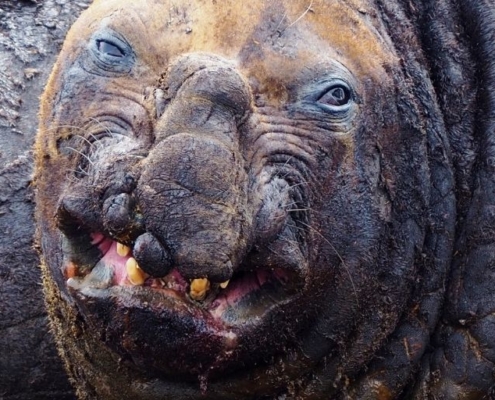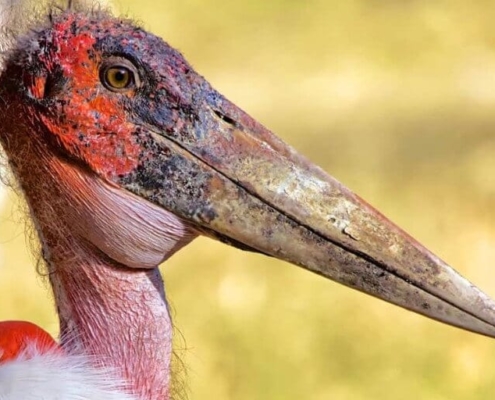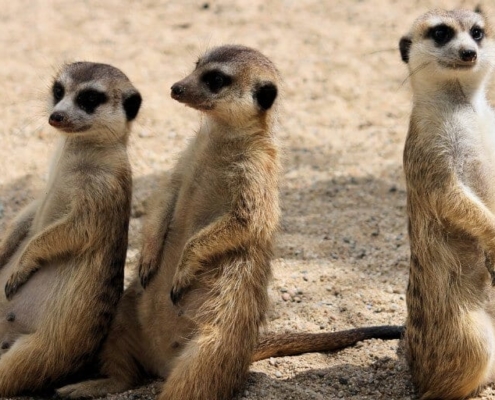 https://safarisafricana.com/wp-content/uploads/2020/10/4-2.jpg
512
1024
Ed
https://safarisafricana.com/wp-content/uploads/2019/07/safaris-africana-logo-blank-1-300x135.png
Ed2020-10-04 09:05:052020-11-13 11:37:43World’s Ugliest Fish
https://safarisafricana.com/wp-content/uploads/2020/10/4-2.jpg
512
1024
Ed
https://safarisafricana.com/wp-content/uploads/2019/07/safaris-africana-logo-blank-1-300x135.png
Ed2020-10-04 09:05:052020-11-13 11:37:43World’s Ugliest FishThe concept of the ‘big seven animals’ is a relatively new one, achieved by adding two ocean giants – southern right whale and great white shark – to the existing big five animals. These big five animals are Cape buffalo, African elephant, leopard, lion, and rhinoceros, named as ‘the big five’ by hunters from African’s colonial era, as they were considered the most difficult and dangerous African beasts to kill whilst hunting on foot.
This means the big seven animals are made up of Cape buffalo, African elephant, leopard, lion, rhinoceros, southern right whale and great white shark.
Both the southern right whale and great white shark are found around the South African coastline in some numbers, particularly off the coast of the Eastern Cape. Great white sharks are permanent residents right around the coast of Southern Africa, whilst each year around 2,500 southern right whales travel to South Africa’s coastline to calve.
In 2000, the Eastern Cape’s Addo Elephant National Park extended their conservancy to include an area of the Indian Ocean. This means it’s now quite possible to spend a morning game drive in the park spotting five of the big seven on land, followed by an afternoon boat ride in the park to view the remaining water-based big seven out at sea. One assumes the concept of the big seven animals came into being as a phrase rather cleverly introduced by the South African tourist board to help promote Addo and the Eastern Cape tourism industry more broadly.
None-the-less, the big 7 animals moniker is here to stay, and South Africa is definitely the number one place to tick them all off your wildlife ‘to see’ list!
Southern right whale

Southern right whale – one of Africa’s big seven animals – breaching
Southern right whales were named by whalers as the ‘right’ whale to hunt as they are slow swimmers, float when dead, and provided large amounts of valuable oil and blubber. They are easily distinguished from other whales species by the broad back and the lack of a dorsal fin. They are playful in nature, and can often be spotted breaching, doing headstands, raising their heads out of the water to look around and interacting with each other. Off the coast, mothers spend many hours teaching their calves the skills they need before heading back to spend the summer in their Antarctic feeding grounds.
Group name: School, herd, or gam. Pod is used for small groups of whales.
Size: Up to 18 meters long, weighing up to 80,000kg, which puts them amongst the heaviest animals in the world.
Cruising speed: 3 km per hour.
Diet: Southern right whales have no teeth and feed mainly on copepods, krill, mysids, plankton, and other tiny crustaceans. They hunt their prey by swimming with their mouth open to trap prey in their baleen bristles, whilst filtering water out of their mouth.
Range & Habitat: Southern right whales are found in all the southern oceans, heading as far north as northern Namibia and northern Mozambique to calve.
When and where to see southern right whales in South Africa: Southern right whales are commonly spotted along the False Bay coastline in Cape Town, and further east along the coast in Hermanus and on to the Eastern Cape. They’re commonly seen in very shallow waters, including estuaries and bays. Whale season runs from June to October and whilst they can be often seen from the land, your best chance of spotting them will come on an organised boat tour.
Read more about southern right whales
Great white shark

A great white shark cruising the Indian Ocean
Perhaps the most feared predator in the world, the great white shark truly is the king of the oceans, and thanks to movies such as Jaws is generally feared and even hated by humans.
Great white sharks are at the top of the food chain, though sometimes fall prey to orcas and other, larger great white sharks. They hunt their prey by targeting them with a small bump, then circling to return to the prey, swimming with their mouths open and ready to attack. Little is known about the social behaviour of the white shark, though evidence suggests they’re largely solitary animals, residing within territorial waters and feeding areas, but also undertaking long inter-continental voyages.
Group name: School, shiver or shoal (see names of other groups of animals).
Size: Up to 6 meters long, weighing up to 2,000kg.
Speed: Up to 56 km per hour in short bursts.
Diet: Newborn great white sharks feed on fish and other sharks, and as they grow to adulthood start hunting sea mammals including turtles, seals, dolphins, sea lions and small whales. Most food is killed by hunting, but great white sharks are known to occasionally scavenge on carcasses.
Range: Great white sharks live in almost all coastal and offshore waters worldwide that have temperatures between 12 and 24 °C. The coastline right around South Africa is one of several major breeding areas around the globe.
When and where to see great white sharks in South Africa: Most of the great white shark hotspots in South Africa are off the Western Cape, including Mossel Bay, Dyer Island, Geyser Rock near Gansbaai, and Seal Island in False Bay, home to ‘flying’ great white sharks. In the Eastern Cape, the area around Port Elizabeth – including Addo Elephant Park – is known for its great white sharks. Most coastal towns in these areas offer boat trips to either view sharks or take part in cage diving with the great whites. (Read our piece on the best diving in Africa, which includes some shark-specific diving.)
Have you seen the big seven animals in South Africa, or have any tips on where and how to see them? Please let us know in the comments below!
Wildlife ‘fives’
Have you seen the big seven animals and are are looking for a new wildlife challenge? For safari aficionados up for ticking all the ‘I’ve seen’ boxes, have you heard about the other groups of 5 animals?
 https://safarisafricana.com/wp-content/uploads/2020/10/4-2.jpg
512
1024
Ed
https://safarisafricana.com/wp-content/uploads/2019/07/safaris-africana-logo-blank-1-300x135.png
Ed2020-10-04 09:05:052020-11-13 11:37:43World’s Ugliest Fish
https://safarisafricana.com/wp-content/uploads/2020/10/4-2.jpg
512
1024
Ed
https://safarisafricana.com/wp-content/uploads/2019/07/safaris-africana-logo-blank-1-300x135.png
Ed2020-10-04 09:05:052020-11-13 11:37:43World’s Ugliest Fish https://safarisafricana.com/wp-content/uploads/2019/08/5-2.jpg
512
1024
Ed
https://safarisafricana.com/wp-content/uploads/2019/07/safaris-africana-logo-blank-1-300x135.png
Ed2020-10-01 06:33:122023-01-28 14:39:02Ugly Animals
https://safarisafricana.com/wp-content/uploads/2019/08/5-2.jpg
512
1024
Ed
https://safarisafricana.com/wp-content/uploads/2019/07/safaris-africana-logo-blank-1-300x135.png
Ed2020-10-01 06:33:122023-01-28 14:39:02Ugly Animals https://safarisafricana.com/wp-content/uploads/2020/06/Copy-of-SAFAF-2X1-images-78.jpg
512
1024
Ed
https://safarisafricana.com/wp-content/uploads/2019/07/safaris-africana-logo-blank-1-300x135.png
Ed2020-06-09 09:47:332020-11-11 18:01:10Best Places For The Big 5 In South Africa
https://safarisafricana.com/wp-content/uploads/2020/06/Copy-of-SAFAF-2X1-images-78.jpg
512
1024
Ed
https://safarisafricana.com/wp-content/uploads/2019/07/safaris-africana-logo-blank-1-300x135.png
Ed2020-06-09 09:47:332020-11-11 18:01:10Best Places For The Big 5 In South Africa https://safarisafricana.com/wp-content/uploads/2020/01/1.jpg
512
1024
Ed
https://safarisafricana.com/wp-content/uploads/2019/07/safaris-africana-logo-blank-1-300x135.png
Ed2020-01-24 11:51:302020-11-10 13:16:32The Big Seven Animals – What They Are & Where To See Them
https://safarisafricana.com/wp-content/uploads/2020/01/1.jpg
512
1024
Ed
https://safarisafricana.com/wp-content/uploads/2019/07/safaris-africana-logo-blank-1-300x135.png
Ed2020-01-24 11:51:302020-11-10 13:16:32The Big Seven Animals – What They Are & Where To See Them https://safarisafricana.com/wp-content/uploads/2019/08/SAFAF-2X1-images-6.jpg
512
1024
safarisafricana team
https://safarisafricana.com/wp-content/uploads/2019/07/safaris-africana-logo-blank-1-300x135.png
safarisafricana team2019-08-18 20:28:502020-11-19 12:03:51What Are ‘The Ugly Five’ Animals?
https://safarisafricana.com/wp-content/uploads/2019/08/SAFAF-2X1-images-6.jpg
512
1024
safarisafricana team
https://safarisafricana.com/wp-content/uploads/2019/07/safaris-africana-logo-blank-1-300x135.png
safarisafricana team2019-08-18 20:28:502020-11-19 12:03:51What Are ‘The Ugly Five’ Animals? https://safarisafricana.com/wp-content/uploads/2019/08/SAFAF-2X1-images-10.jpg
512
1024
safarisafricana team
https://safarisafricana.com/wp-content/uploads/2019/07/safaris-africana-logo-blank-1-300x135.png
safarisafricana team2018-08-18 21:01:032021-11-08 11:10:37What Are ‘The Shy Five’ Animals?
https://safarisafricana.com/wp-content/uploads/2019/08/SAFAF-2X1-images-10.jpg
512
1024
safarisafricana team
https://safarisafricana.com/wp-content/uploads/2019/07/safaris-africana-logo-blank-1-300x135.png
safarisafricana team2018-08-18 21:01:032021-11-08 11:10:37What Are ‘The Shy Five’ Animals?


Discover more of our wildlife posts…
What Are ‘The Big Five’ Animals?
March 4, 2017/by safarisafricana teamThe Strongest Animals In The World
June 14, 2020/by EdThe Biggest Birds In The World
October 14, 2020/by EdApe vs Monkey: What Are The Differences?
September 2, 2020/by EdWombat Poop… Why Is It Cube-Shaped?
December 20, 2020/by safarisafricana teamWild Cats Of Africa
April 19, 2020/by EdBest Places For The Big 5 In South Africa
June 9, 2020/by EdWhy Are Flamingos Pink?
August 26, 2020/by EdWorld’s Ugliest Fish
October 4, 2020/by Ed